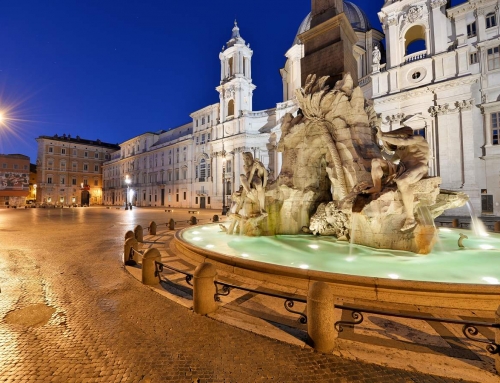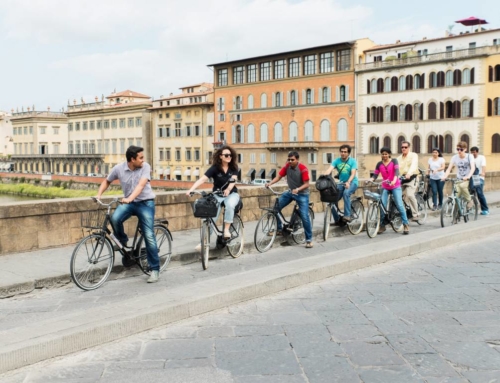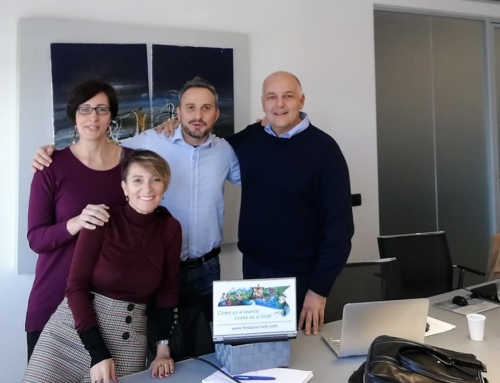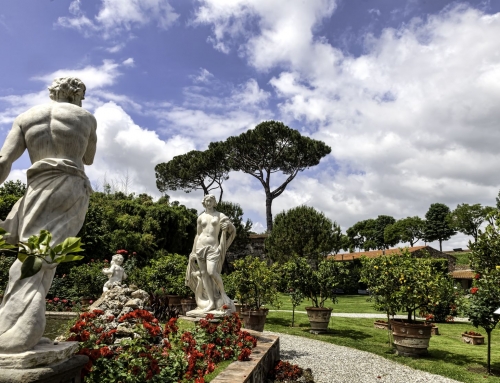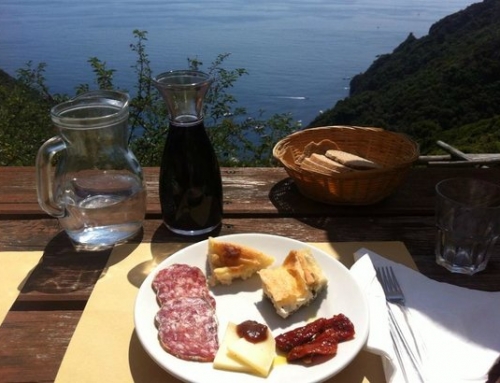I have been attending the WTM London for 10 years, and also this November I exhibited with FindYourItaly at the Italian National Board stand. I consider this event pretty unique as it attracts every year a huge number of exhibitors and visitors. I agree itt might be very dispersive if not well planned in advance, but in spite of the power it might have in generating new contacts and leads, it remains one of the top event to understand the trends of the travel industry.
Of course the themes around which the top leaders of tourism focused during the years has changed a lot, as the tourism itself has changed a lot. Travelers are now more aware of what they want. They expect to live an experience, to be protagonists of their trip, to meet local people and learn about their culture.
I think this year there were three main protagonists at WTM: Italy, Overtourism, Responsible Travel. And in a way all of them are connected.
ITALY BACK ON THE SCENE
The Italian National Tourist Board (ENIT) wad the Premier Partner at the exhibition this year. The deal is part of a strategy launched by ENIT aimed at repositioning and widening the country’s tourist offering beyond its traditional destinations such as Rome and Venice, which often suffer from overcrowding.
Italy has 53 Unesco World Heritage sites, more than any other country. It is the fifth most popular destination worldwide for international arrivals, with 52 million visitors in 2016, up 3,2% on 2015.
Thanks to this incredible numbers, tourism represents an extraordinary engine of economic development for the country but the rise in visitor numbers shows the need of finding concrete solutions for managing the huge growth of incoming travellers. Dario Franceschini – minister of Cultural heritage and Tourism commented: “In the tourism sector, where competition is so fierce, it is fundamental for Italy to diversify its attractions and spread tourist flows over the entire national territory. There is a need to manage numbers to avoid concentration in our great art cities, which are beautiful but fragile. Now, more than ever, the promotion of Italy is a strategic tool to direct visitors all over the country.”
The main reasons for travel remain Italian culture, food and shopping and the great art cities the most visited places but there seems to be an emerging trend among visitors: “We have registered strong growth in sustainable tourism. This includes more bookings in small villages, on religious walking paths, bike trails, food and wine itineraries and historic railways. There has also been growth in cultural tourism in regions traditionally better known for their seaside resorts.”
This trend seems to be confirmed also by Pasquale Terracciano, the Italian Ambassador to UK. He highlighted how interest in the country continued to be varied, with tourists looking beyond the traditionally popular regions of Campania, Tuscany and Veneto.
“The town of Matera (in the region of Basilicata, Southern Italy) becoming 2019 European Capital of Culture is one of many fantastic developments we welcome and we are sure this trend of diversification in where people travel will continue”.
Promoting Italy’s ancient villages (borghi) was highlighted as another way in which Italy has been trying to spread tourism around the country in 2017.
#ITALY
Italy has become the most photographed country in the world, notching up to 70 million posts attached to #Italy on Instagram. Searches for destinations via Google also increased by 14% in the first half of the year, said Fabio Lazzerini – a board director of Enit. Research carried out by Ipsos MORI for Enit in 18 countries has also revealed that “if consumers could visit any dream destinations tomorrow” 37% would visit Italy, making it top of the list worldwide. Now the problem for the future seems to be how to manage this flow of tourists. One initiative to achieve this aim is by making 2018 the “year of Italian food”.
THE OTHER FACE OF TOURISM
A new buzzword can be heard at WTM London this year and it is one to take notice of, especially in Europe – overtourism. According to UNWTO, Europe might receive about half of all international tourists – 615 million overnights in 2016 – but some cities like Barcelona, Venice and Santorini in particular are feeling the strain.
Ministers of leading countries came together in London to debate this issue, while the European Tour Operator Association (Etoa) spoke at another session on Monday the 6th. By words of Etoa head of strategy and policy Tim Fairhurst “Recent restrictions on new hotel capacity and efforts to control the growth of the peer-to-peer accommodation market in Barcelona were a response to tourism’s impact on the city. Long-term success will require a more holistic approach.”
Airbnb and other accommodation portals are accused of pricing out local people discouraging the long term rentals, while another problem is the number of visits by cruise ships. Venice was the first to raise this issue, while Santorini has now set a limit of 8,000 cruise ship passengers per day after numbers swelled to 18,000 on peak dates.
Overtourism looks likely to be an issue for years to come as part of Europe face up to the problems of success. Despite major terrorist incidents in several cities that have given a negative image of Europe, there is no evidence so far that terror has a long term effect on visitor numbers.
Caroline Bremner – head of travel at Euromonitor said “It is obvious that strategies are needed to cope with large tourism demand. Strategies could include imposing quotas on the number of tourists as key sites, creating new attractions, improving the dispersal of visitors, curbing hotel expansion, controlling short-term rentals, and raising prices such as introducing ticketing at formerly free attractions.”
A CHALLENGE FOR THE FUTURE
Etoa urges tour operators to think what their tours might look like 5 or 10 years into the future, and to plan ahead. Overcrowding could be reduced by simple measures such as running city sightseeing tours in the afternoon rather than in the morning, and avoiding periods of heavy traffic.
The UNWTO has laid down guidelines. These include diversifying visitor activities; effective and integrated practices and policies to manage visitors at tourist sites; policies to reduce seasonality; and incentives for the private sector to invest in new areas and new products, and reduce energy and water consumption.
“Every growing human activity has a downside to it” says Taleb Rifai, UNWTO general secretary “ The answer should never be to halt the activity and lose all its clear benefits, but rather to live up to the challenge and manage it correctly. Let us remember the motto of this International Year of Sustainable Tourism for Development: to travel, enjoy and respect.”
TRAVEL LOCAL AND RESPONSIBLE: THE KEY TO OVER-TOURISM ISSUES
A panel session at Responsible Tourism Theatre in WTM London point out how working together with local residents in key destinations could help the travel industry to start tackling the growing problem of overtourism. Carlos Vogeler – executive director for member relations at UNWTO – says: “Overtourism is becoming a problem that we can’t ignore. The problem sometimes is that the tourists arriving are not providing the benefits that the community is expecting – that’s where the clash comes.”
While discussions about possible ways to limit tourism numbers are still open and the ideal practical solution have not yet arrived, Garry Wilson – managing director at Tui Group – suggest tour operators to be “very keen to get the community involved” when building a new resort or start a new route. “You have to be making a positive contribution – making sure food is locally sourced and local people are being employed in the hotels.”
Just this topic was discussed at the conference session “Travel Media Market – Global Advertising Trends and how to focus on Responsible Tourism”.
FOCUS ON RESPONSIBLE TOURISM
The global performance management company Nielsen presented at WTM the report of a new survey, that put together data from 24 countries worldwide. Australia, China and the UK get major attention as they have the highest per capita spend in travel and tourism.
Some important trends on new product innovation and millennial market came out. The survey found that a growing percentage of people are prepared to pay more for sustainable tourism products.
Consumers are interested in sustainability in many sectors, including food, automobiles and travel. Around 66% are willing to pay more for sustainable offerings if doing so ensures they remain loyal to their values.
Ann-Sophie Wagner – Nielsen analytic consultant – added that “advertising sustainable tourism products is a key requirement to appeal the millennial generation born between 1977 and 1995.”
“It is important to stress the role of social media and put sustainability as a key message. Make an emotional connection with the consumer, such as showing a tour that interacts with local people.”
The session concluded that travellers want to know that local people will benefit from the holidays they take.
What to discover more about Italy get in touch with us!


